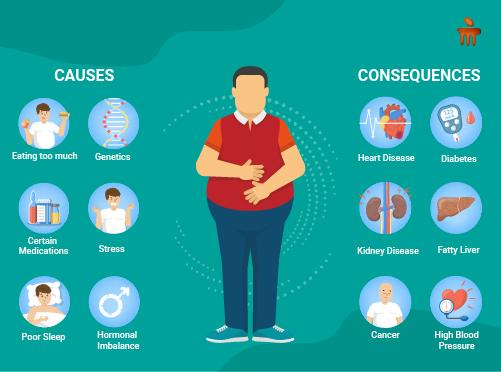A complicated medical condition known as obesity is defined by an excessive build-up of body fat that raises the risk of a number of illnesses. The body mass index (BMI), which is computed by dividing a person’s weight in kilograms by the square of their height in metres, is commonly used to measure it (kg/m^2). Obesity is often indicated by a BMI of 30 or higher.
Health Risks: A number of illnesses, such as the following, are linked to an increased risk of obesity.
Type 2 Diabetes: High blood sugar and a higher chance of acquiring type 2 diabetes are caused by obesity’s increased insulin resistance.
Cardiovascular Diseases: Heart disease, hypertension (high blood pressure), stroke, and other cardiovascular disorders are significantly increased by obesity.
Obesity hypoventilation syndrome, sleep apnea, and breathing issues are all associated with being overweight.
Some Cancers: Obesity has been linked to a higher chance of getting breast, colon, and prostate cancer, among other cancers.
Causes: A mix of behavioural, environmental, and hereditary variables frequently lead to obesity. These could consist of:
Poor Diet: Eating processed meals high in calories and lacking in nutrients might cause weight gain.
Genetics: Genetic variables can influence metabolism, appetite control, and fat accumulation, which can predispose people to obesity.
Socioeconomic Factors: Obesity rates can be influenced by socioeconomic status, healthcare services, education, and access to healthful foods.
Management and Prevention: Changing one’s food, upping physical activity, altering one’s behaviour, and occasionally seeking medical attention are all part of the process of preventing and treating obesity. Some possible strategies are as follows.
regular physical activity, such as strength training, flexibility training, and cardiovascular exercise. To ensure long-term success, realistic weight loss objectives should be set and lifestyle modifications should be made gradually.




























